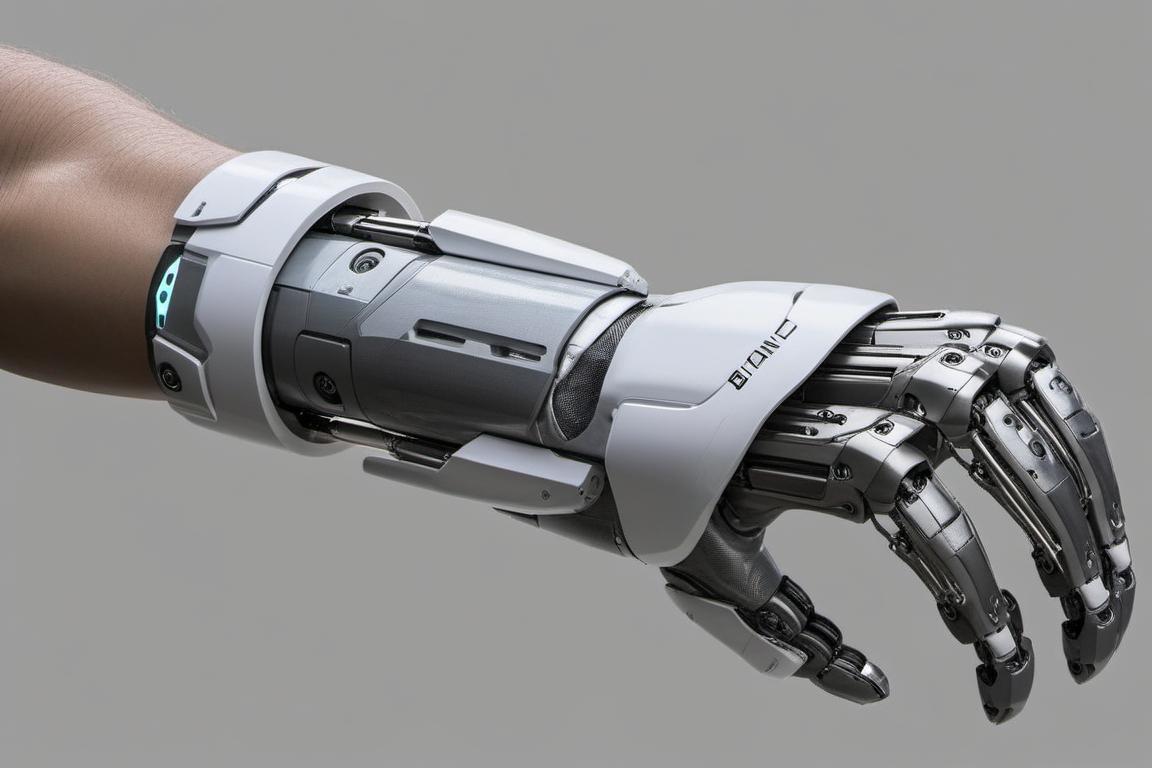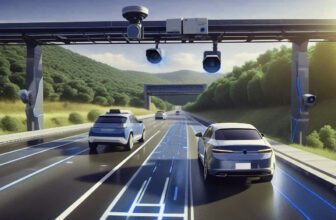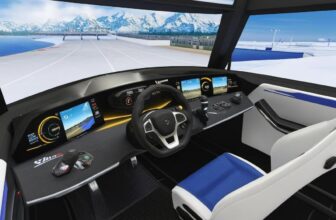
What Is the Mind-Bending Bionic Arm Powered by AI?
The realm of prosthetics has undergone a dramatic transformation over the past few decades, and we now stand on the cusp of a new era: the rise of bionic arms powered by artificial intelligence (AI). These groundbreaking devices are not merely tools for restoring lost functionality but are increasingly being developed to surpass the capabilities of the human body itself. The combination of advanced robotics, AI, and cutting-edge biotechnology has resulted in bionic arms that challenge our understanding of what is possible, blending human ingenuity with technological advancement in truly mind-bending ways.
In this article, we explore the fascinating world of AI-powered bionic arms, uncovering their design principles, capabilities, and transformative impact on the lives of users.
The Evolution of Prosthetics: From Wood to AI
Prosthetic limbs date back thousands of years, with some of the earliest examples being simple wooden or metal constructs used to mimic basic limb functions. These early devices, though innovative for their time, were limited in scope and practicality. The 20th century ushered in significant advancements with the introduction of powered prosthetics, which utilized rudimentary electronics to provide some degree of movement and utility.
However, it was the advent of microprocessors and sensors in the late 20th and early 21st centuries that truly revolutionized the field. Today, AI-powered bionic arms represent the cutting edge, capable of interpreting neural signals, adapting to user behavior, and even learning over time. These advances have taken prosthetics from being passive tools to becoming active extensions of the human body.
How AI-Powered Bionic Arms Work
At their core, AI-powered bionic arms are designed to bridge the gap between the user’s intent and the mechanical functionality of the device. This is achieved through a combination of key technologies:
1. Electromyography (EMG) Sensors
EMG sensors detect electrical signals generated by muscle contractions in the residual limb. These signals are interpreted by the AI system to determine the user’s intended movement. For instance, when a user thinks about closing their hand, the sensors pick up the corresponding muscle activity, and the bionic arm executes the movement.
2. Advanced Machine Learning Algorithms
Machine learning algorithms enable the bionic arm to adapt to the unique neural and muscular patterns of each user. By analyzing repeated actions and refining its responses, the arm becomes more intuitive and precise over time. Some systems even incorporate reinforcement learning to improve their performance in real-world scenarios.
3. Sensory Feedback Systems
One of the most mind-bending aspects of modern bionic arms is their ability to provide sensory feedback. By embedding sensors in the prosthetic fingers or palm, the device can detect pressure, temperature, and texture. These signals are then transmitted back to the user through various means, such as vibrating motors or direct neural interfaces, creating a sense of touch.
4. Direct Neural Interfaces
Some of the most advanced bionic arms bypass muscle signals altogether and interface directly with the user’s nervous system. By implanting electrodes in the brain or peripheral nerves, these systems can achieve a seamless connection between thought and action, allowing for unprecedented levels of control and dexterity.
The Capabilities of AI-Powered Bionic Arms
AI-powered bionic arms have capabilities that were once the stuff of science fiction. Here are some of the most notable features:
1. Precision and Dexterity
Modern bionic arms can perform intricate tasks such as picking up small objects, typing on a keyboard, or even playing musical instruments. The fine-tuned motor control enabled by AI allows users to perform actions with a level of precision that rivals—and in some cases exceeds—natural human capabilities.
2. Adaptive Learning
Thanks to machine learning, these prosthetics can adapt to the user’s habits and preferences. For example, if a user frequently performs a specific motion, the AI can optimize the arm’s responsiveness for that action, making it faster and more efficient over time.
3. Sensory Integration
The ability to “feel” through a prosthetic arm is a game-changer. Sensory feedback systems allow users to gauge the firmness of their grip, differentiate between textures, and even sense heat and cold. This restores a level of autonomy and confidence that was previously unattainable.
4. Connectivity and Smart Features
Many AI-powered bionic arms are equipped with Bluetooth or Wi-Fi connectivity, enabling them to integrate with smartphones and other devices. Users can customize settings, track usage patterns, and even receive firmware updates to enhance functionality.
5. Robust Durability
Designed for real-world use, these prosthetics are often built with materials like carbon fiber and titanium, ensuring they are lightweight yet durable. They can withstand a variety of environmental conditions, from rain to extreme temperatures.
Real-World Applications and Impact
The impact of AI-powered bionic arms extends far beyond individual users, reshaping industries and societal perceptions alike.
1. Healthcare and Rehabilitation
In the medical field, these devices are transforming rehabilitation for amputees and individuals with limb differences. By providing a more natural and intuitive means of movement, bionic arms significantly reduce the physical and emotional strain associated with limb loss.
2. Enhanced Workforce Participation
Bionic arms are enabling users to re-enter or remain in the workforce by allowing them to perform tasks that were previously impossible. From manual labor to high-precision jobs, these devices expand opportunities for people with disabilities.
3. Education and Research
Educational institutions and research facilities are leveraging bionic arms to study human-machine interaction and improve AI algorithms. This research not only enhances prosthetic technology but also contributes to broader advancements in AI and robotics.
4. Cultural and Artistic Impact
Bionic arms are also making waves in the arts and culture sectors. Some users have utilized their prosthetics to create unique forms of art, music, and dance, challenging traditional notions of human creativity and expression.
Challenges and Ethical Considerations
Despite their incredible potential, AI-powered bionic arms are not without challenges and ethical concerns. These include:
1. Accessibility and Cost
The high cost of these advanced prosthetics remains a significant barrier for many potential users. Efforts are underway to reduce manufacturing costs and expand insurance coverage, but affordability remains a critical issue.
2. Privacy and Security
As bionic arms become more connected, concerns about data privacy and cybersecurity arise. Sensitive user data, such as neural signals and movement patterns, must be protected from potential breaches.
3. Ethical Boundaries
The prospect of enhancing human capabilities through bionic technology raises ethical questions. Should these devices be used solely for restorative purposes, or is it acceptable to augment healthy individuals as well? The line between therapy and enhancement is becoming increasingly blurred.
4. Psychological Adjustment
While bionic arms can restore physical functionality, the psychological adjustment to using such devices can be challenging. Users must adapt to the sensation of controlling a machine and integrate it into their sense of self.
The Future of AI-Powered Bionic Arms
The future of AI-powered bionic arms is incredibly promising. Researchers and engineers are exploring several exciting avenues, including:
1. Brain-Machine Interfaces (BMIs)
BMIs are poised to revolutionize prosthetics by enabling direct communication between the brain and the bionic arm. This could eliminate the need for muscle-based control systems altogether, providing even greater precision and responsiveness.
2. Enhanced Sensory Feedback
Future devices may offer even more sophisticated sensory capabilities, including the ability to feel pain (for protective purposes) or experience nuanced sensations like humidity and texture.
3. Personalized Prosthetics
Advances in 3D printing and AI customization will allow for highly personalized prosthetics tailored to the unique anatomy and preferences of each user. This will improve comfort, functionality, and user satisfaction.
4. Integration with Wearable Technology
Bionic arms could become part of a broader ecosystem of wearable technologies, working seamlessly with smart glasses, exoskeletons, and other devices to enhance human capabilities.
5. Biohybrid Systems
The convergence of biology and technology could lead to biohybrid prosthetics that integrate living tissues with mechanical components. These systems may eventually be capable of self-repair and growth, mimicking natural limbs more closely than ever before.
The emergence of AI-powered bionic arms represents a paradigm shift in the field of prosthetics, offering unparalleled opportunities for individuals with limb loss and pushing the boundaries of human potential. As technology continues to evolve, these devices will not only restore functionality but also redefine what it means to be human. With ongoing advancements in AI, robotics, and biotechnology, the future of bionic arms promises to be as transformative as it is mind-bending, a witness to the power of innovation in improving lives and reshaping our world.





